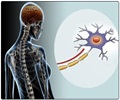An effort to fine-tune descriptions, or phenotypes, of Multiple sclerosis was taken by an international team of leaders in MS research and clinical care.

In 1996 the Committee had developed consensus around descriptions of the courses of MS to facilitate research in MS and so that researchers and clinicians around the world would have a common understanding of the types of MS discussed in publications and in the clinic. This consensus highlighted four courses of MS -- relapsing-remitting, secondary progressive, primary progressive, and progressive relapsing. While these descriptions of MS have become well-established, understanding of MS has advanced, prompting a re-evaluation of the course of MS and any biological signposts (such as blood markers or imaging) that might help refine these phenotypes.
After a thorough search of the medical literature and convening an international workshop funded by collaborators worldwide (National MS Society, ECTRIMS, Americas Committee for Treatment and Research in MS, MS International Federation, and MS Society of Canada), the Committee published recommendations that modify prior clinical course descriptions. The Committee recommended retaining major courses of MS – relapsing-remitting, secondary-progressive and primary progressive -- but recommended categorizing progressive relapsing as an active form of primary progressive MS.
Importantly, they recommended that clinicians not just determine a person's course of MS, but further sub-categorize that course as "active" or "not active" (depending on the presence of clinical relapses or activity on MRI scans) or as progressing (worsening) or not progressing, based on clinical evidence of changes in disability. "This will provide a truer picture of what an individual experiences," added Dr. Coetzee.
"These revisions should make communication with patients and among physicians clearer and should also enhance the design, recruitment and conduct of clinical trials, which will further help us understand the disease," noted Fred D. Lublin, MD, Director of the Corinne Goldsmith Dickinson Center for Multiple Sclerosis at The Icahn School of Medicine at Mount Sinai, and the article's lead author.
Areas recommended for further research by the Committee include long-term studies to track people with MS over time, imaging studies to gain a window on brain and spinal cord damage caused by the disease, biomarkers that might differentiate types of MS, and patient-reported outcomes. Researchers funded by the National MS Society and others worldwide are already working toward many of these goals, in efforts to help people with MS live their best lives. In addition, this information will be considered by the Society's leadership as it develops future research strategies.
Advertisement















